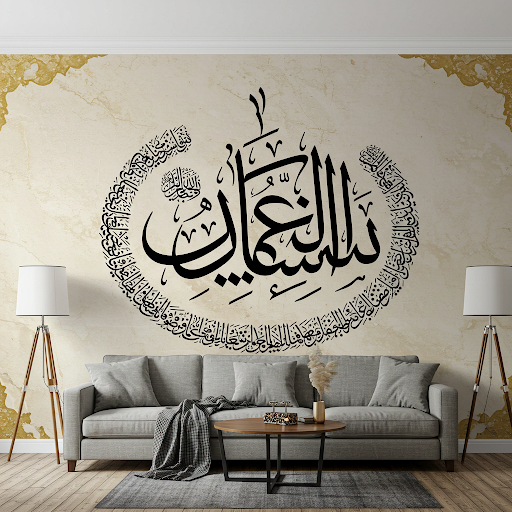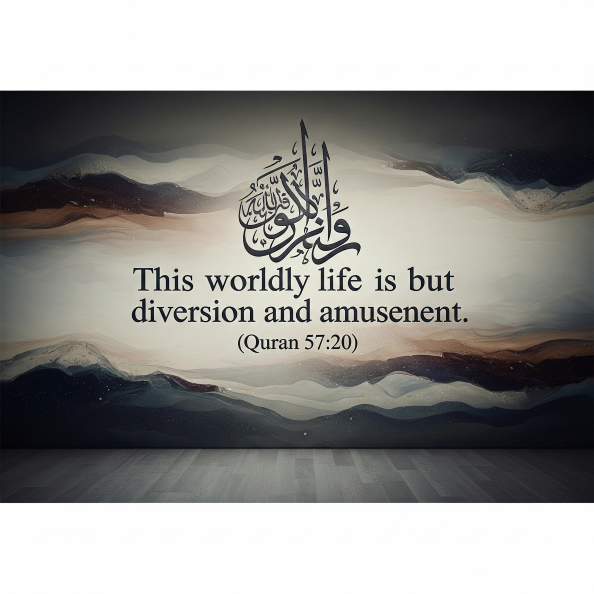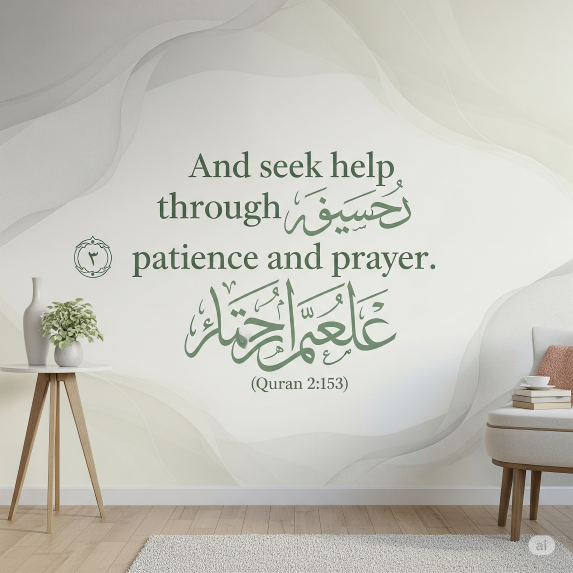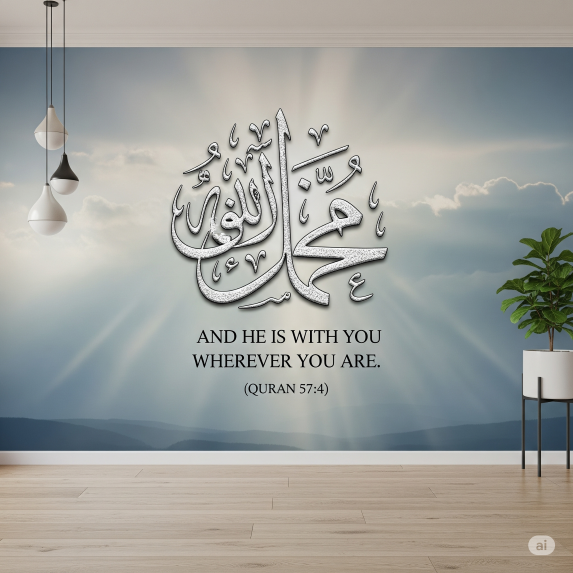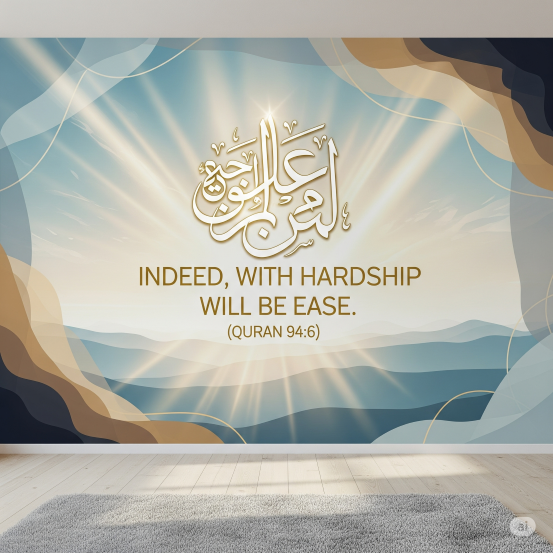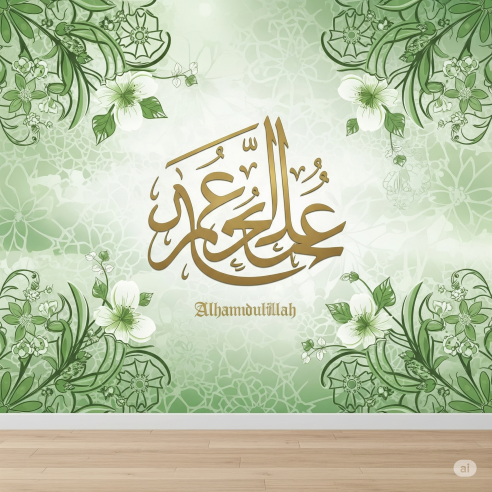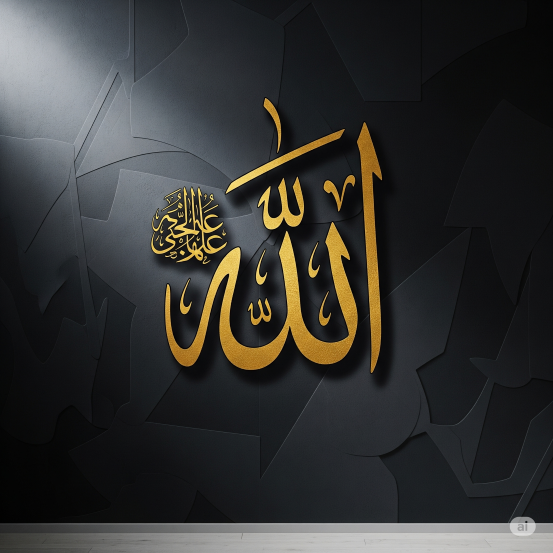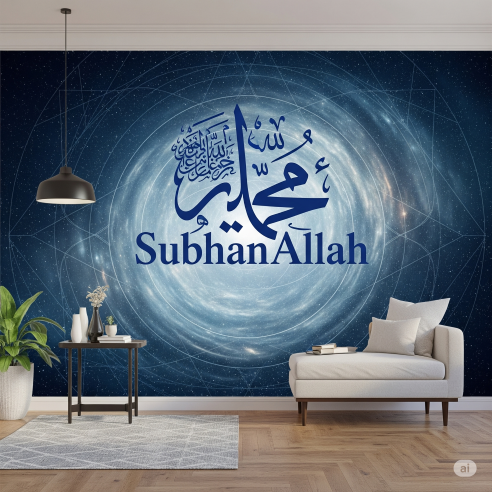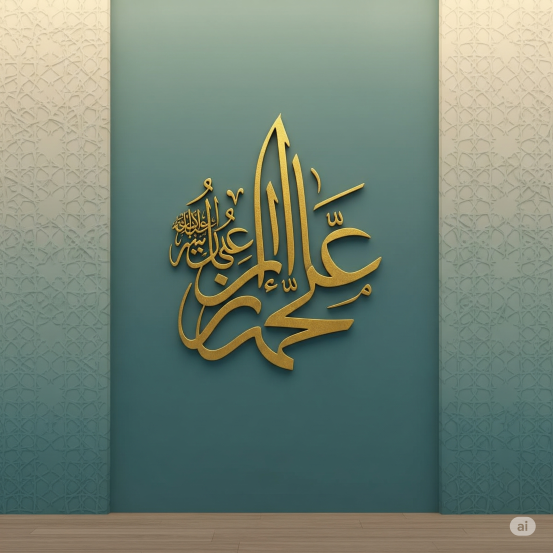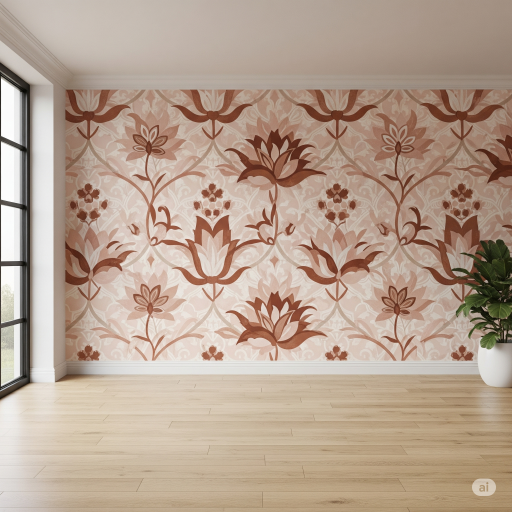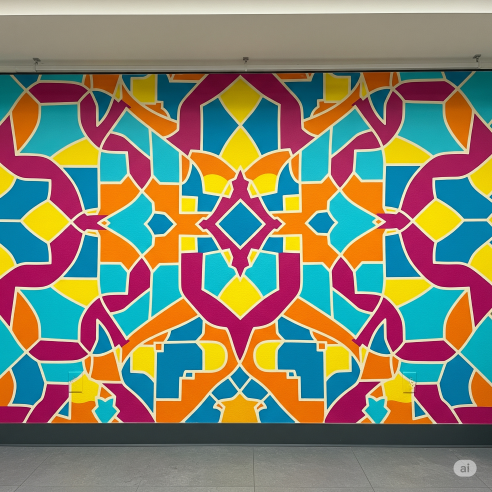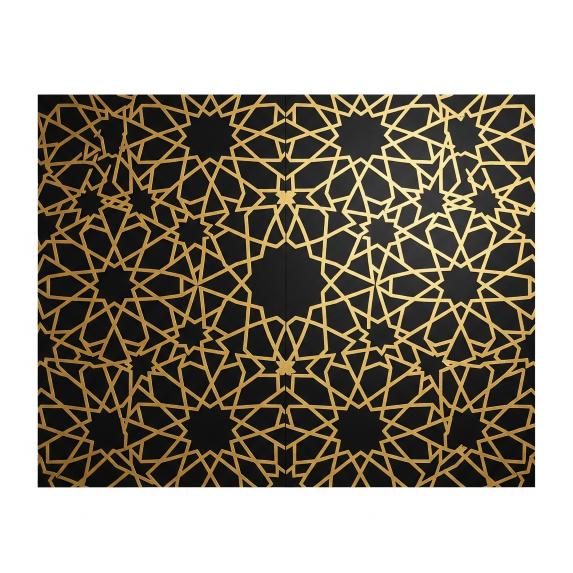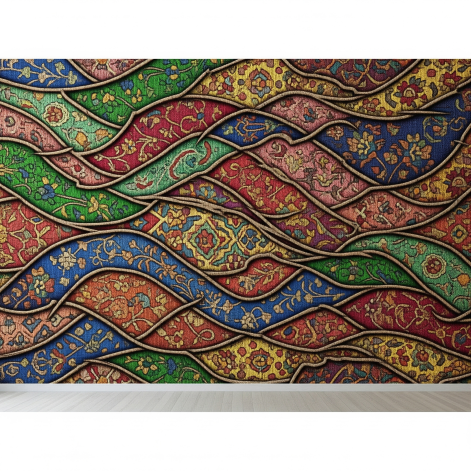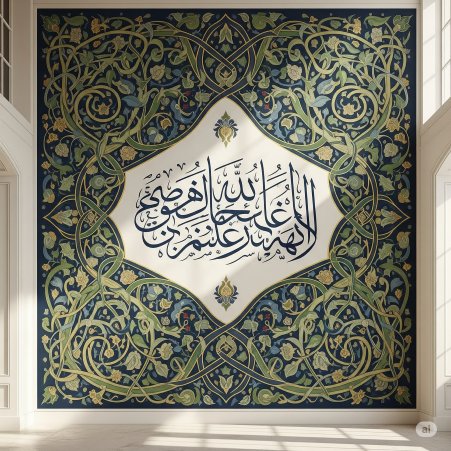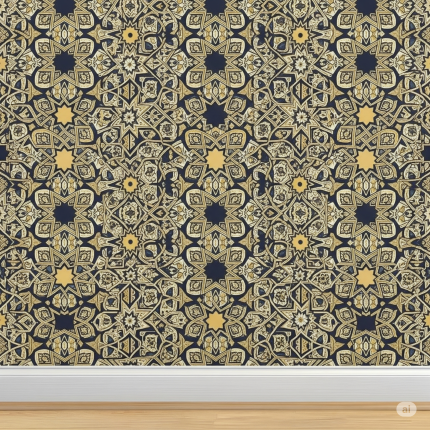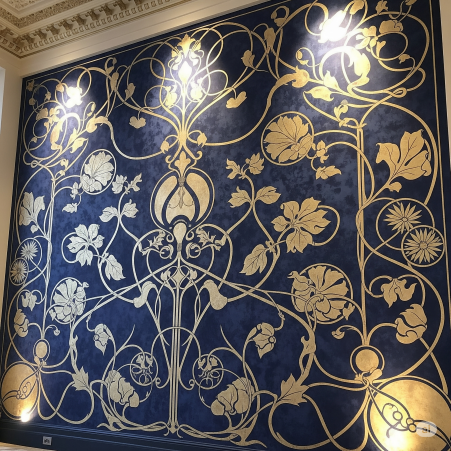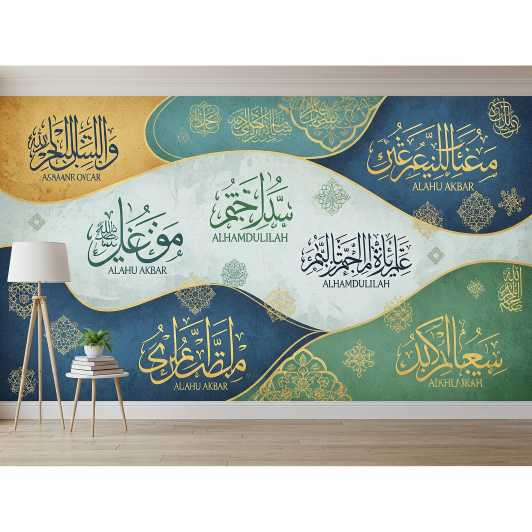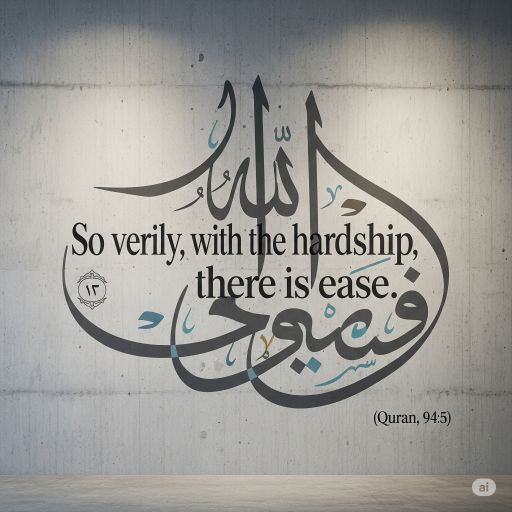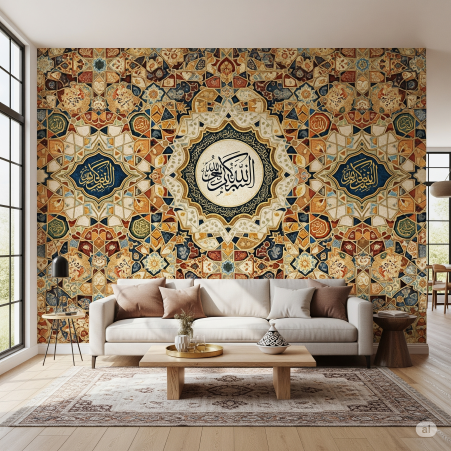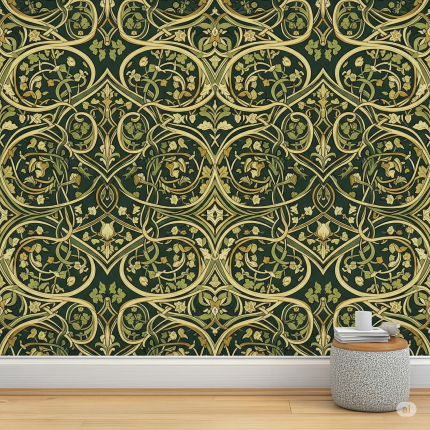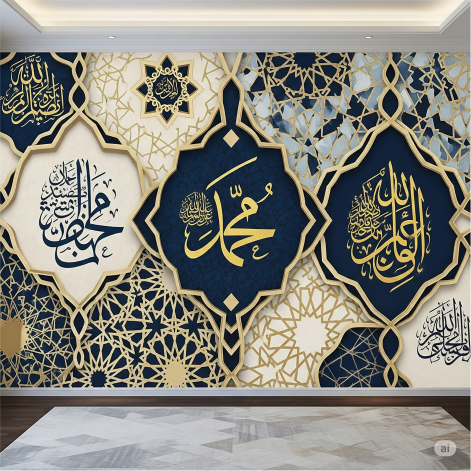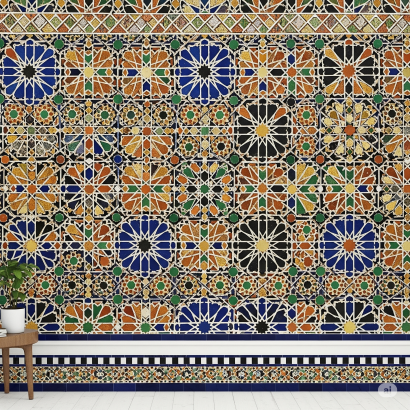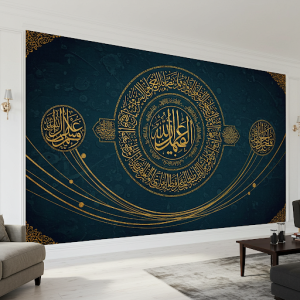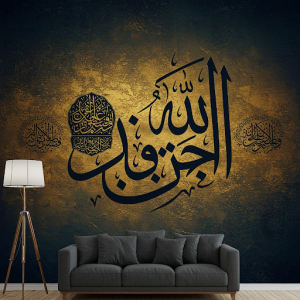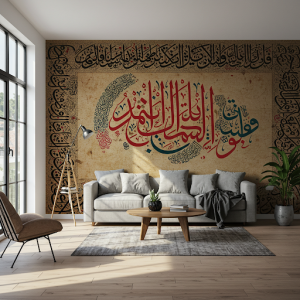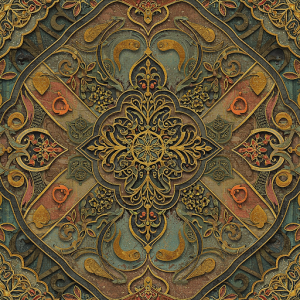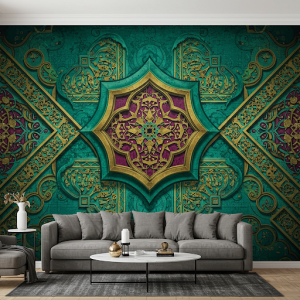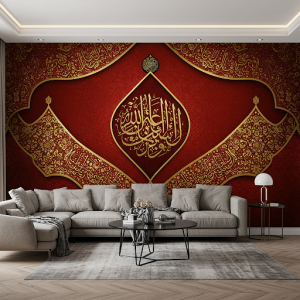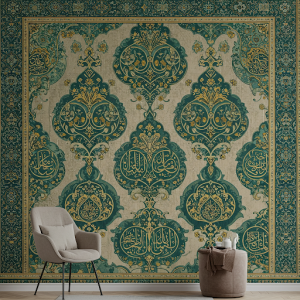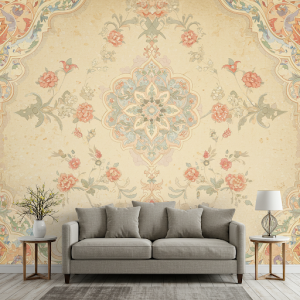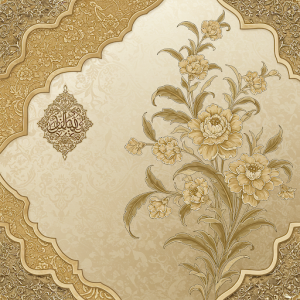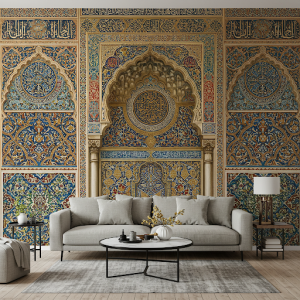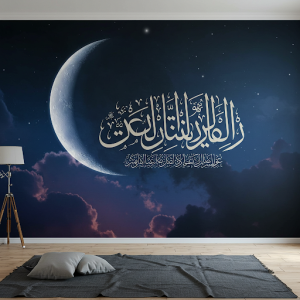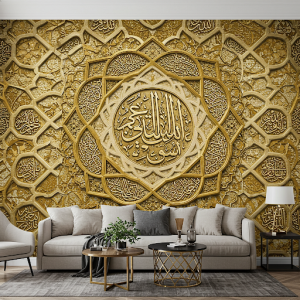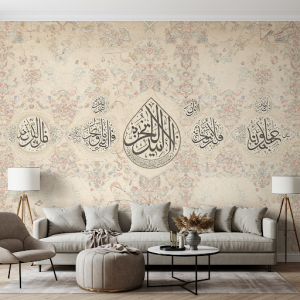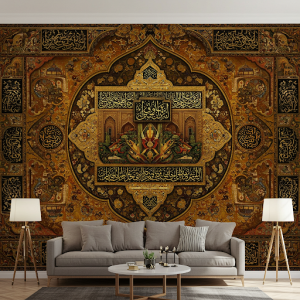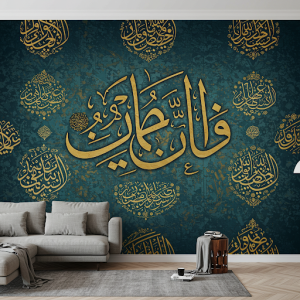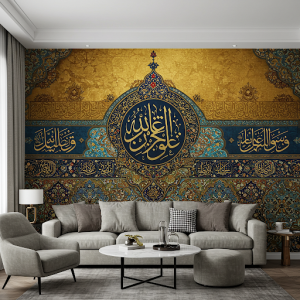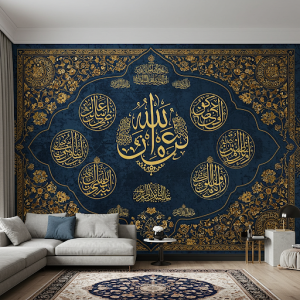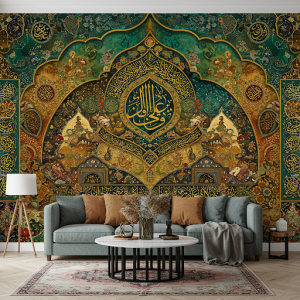Description
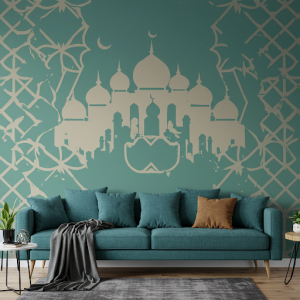
Islamic wallpaper murals encompass a rich and diverse range of artistic expressions, reflecting the beauty and depth of Islamic culture.
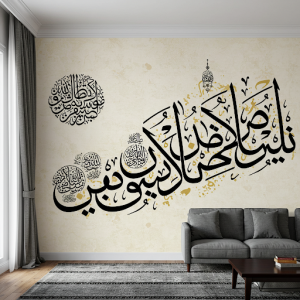
These wallpapers often feature intricate geometric patterns, a hallmark of Islamic art, which create mesmerizing visual displays. These patterns, with their repeating and symmetrical designs, symbolize the infinite nature of God and the interconnectedness of all things.
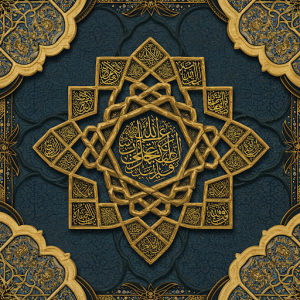
Another prominent element in Islamic wallpaper is Arabic calligraphy. This art form transforms the Arabic script into elegant and flowing designs, often featuring verses from the Quran or other significant Islamic texts. The calligraphy can range from simple and minimalist to elaborate and ornate, showcasing the skill and artistry of the calligrapher.
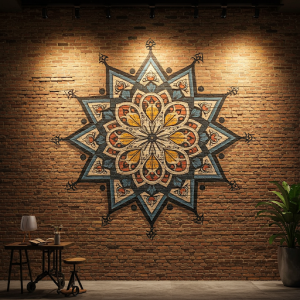
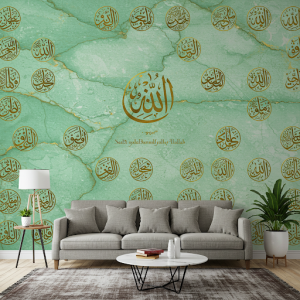
Furthermore, Islamic wallpapers may incorporate floral and vegetal motifs, which are often stylized and abstract. These designs, known as arabesque, avoid depictions of human or animal figures, adhering to Islamic artistic traditions. The use of vibrant colors and intricate details creates a sense of harmony and tranquility.
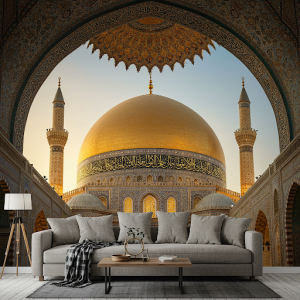
In addition to traditional designs, modern Islamic wallpapers may also feature contemporary interpretations of Islamic themes. These can include abstract representations of mosques, domes, or other architectural elements, as well as digital art that blends traditional motifs with modern techniques. Whether traditional or modern, Islamic wallpapers serve as a beautiful and meaningful way to decorate spaces and express one’s faith and appreciation for Islamic art.
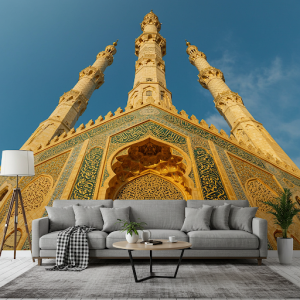
Islamic wallpaper mural motifs inspired by Islamic art traditions
Calligraphic Islamic wallpaper murals
Islamic calligraphy wallpaper murals are a stunning form of art that combines the beauty of Arabic script with the grandeur of large-scale wall displays. These murals serve not only as decorative elements but also as powerful expressions of faith and cultural heritage.
Artistic Islamic wallpaper
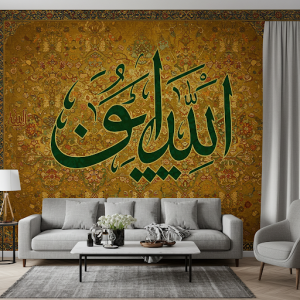
Islamic calligraphy transcends mere writing, evolving into a profound art form where words become visual expressions of faith and beauty. The “flowing and elegant forms” are not accidental. They are the result of centuries of refinement, where each curve and stroke carries spiritual weight. Murals, on their grand scale, amplify this impact, transforming walls into canvases of divine messages.

These murals, frequently adorned with Quranic verses or prophetic sayings, constantly remind us of Islamic principles, fostering contemplation and connection to the divine.
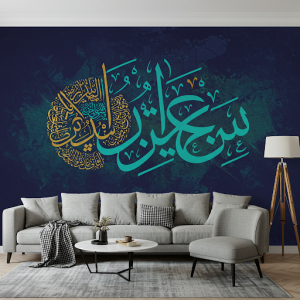
The choice of calligraphic style—Thuluth’s majestic curves, Naskh’s clarity, or Kufic’s angular precision—is deliberate, each style lending a unique character to the mural. This diversity allows artists to tailor their work to the specific message and context, creating intricate designs that captivate the viewer. The interplay of script, space, and color elevates these murals beyond decoration, making them powerful tools for spiritual and aesthetic enrichment.
Cultural Significance
Islamic murals are vital expressions of cultural identity and religious devotion. They preserve and celebrate the Arabic language, integral to the Quran, transforming scripture into visual art. Found in mosques, homes, and public spaces, these murals foster spiritual connection and cultural continuity. They act as visual reminders of Islamic teachings, enriching environments with historical and religious significance.

These artworks transcend mere decoration, serving as powerful conduits of faith and cultural heritage, transmitting values and aesthetics across generations.
Design and Execution
Creating an Islamic calligraphy mural is a demanding art, necessitating both technical skill and artistic insight. The process begins with meticulous planning, where artists choose meaningful texts and suitable calligraphic styles to convey the desired message. Execution involves diverse materials, from traditional paints and inks to modern techniques like digital printing and laser cutting, allowing for varied textures and effects. The sheer scale of these murals adds a dramatic visual impact, transforming spaces into immersive artistic experiences. Each mural stands as a testament to the artist’s dedication and the enduring beauty of Islamic calligraphy.
Modern Applications of Islamic Wallpaper Murals
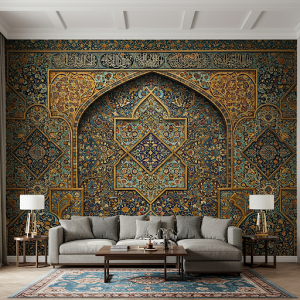
Despite their traditional origins, Islamic calligraphy murals are seamlessly integrated into modern interior design. They serve as striking focal points, adding cultural depth and artistic flair to diverse spaces like living rooms and offices. Digital advancements have broadened accessibility, enabling high-resolution prints and personalized designs. This fusion of tradition and technology allows for unique expressions of faith and artistry within contemporary settings, making these murals a versatile and impactful design element.
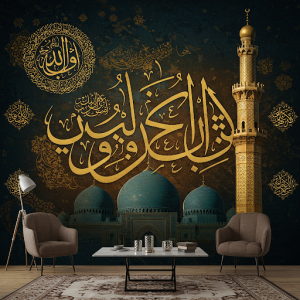
In essence, Islamic calligraphy murals are a testament to the enduring beauty and power of Islamic art, blending tradition with contemporary expression.
Geometric patterns Islamic wallpaper murals
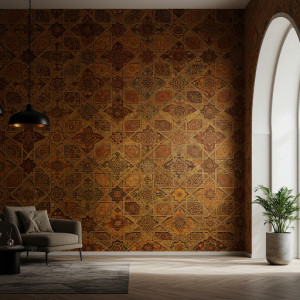
Islamic geometric patterns are a captivating and integral part of Islamic art, and their use in wallpaper creates visually stunning and spiritually evocative designs.
Mathematical Precision
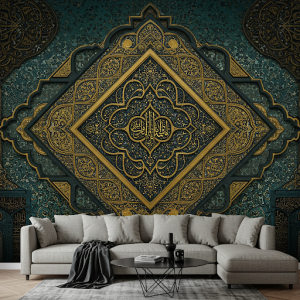
The allure of Islamic geometric wallpaper lies in its foundation of mathematical precision. Shapes like circles, squares, and stars are not randomly placed; their arrangement adheres to rigorous geometric principles. This calculated approach results in intricate, interwoven designs that possess remarkable visual harmony.
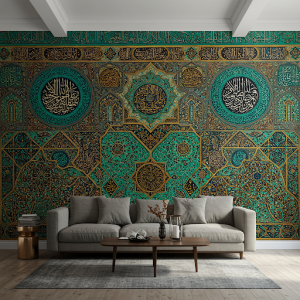
The mathematical underpinnings contribute to a sense of order and balance, making these wallpapers both aesthetically pleasing and intellectually stimulating. The precision ensures that the complex patterns avoid visual chaos, instead achieving a captivating and serene visual experience.
Symbolic Significance
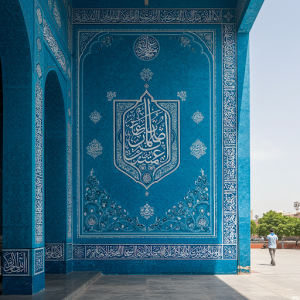
Islamic geometric patterns transcend mere decoration, serving as profound symbolic representations. Their intricate, repeating designs are not arbitrary; they reflect a deeper understanding of the universe’s order and balance, perceived as divine creation. The infinite nature of God is mirrored in the patterns’ endless repetition, suggesting a boundless and continuous presence. Symmetry emphasizes the harmonious structure of existence, highlighting the interconnectedness of all things. These patterns, therefore, act as visual meditations, inviting contemplation on the vastness and unity of creation.
Variety and Complexity
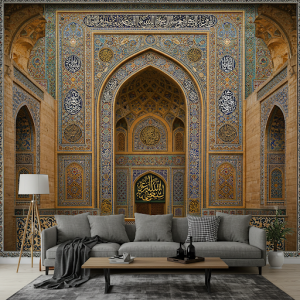
Islamic geometric patterns exhibit a remarkable stylistic range. The variety is vast, from the understated elegance of simple repeating motifs to the breathtaking complexity of elaborate designs. Basic patterns may feature repeating squares or circles, while advanced designs incorporate intricate star patterns, complex tessellations, and multi-layered rosettes. This diversity allows for a wide range of aesthetic expressions, catering to various tastes and design preferences. The patterns’ adaptability allows for their use in diverse contexts, from minimalist designs to highly ornate decorative schemes.
Aesthetic Appeal
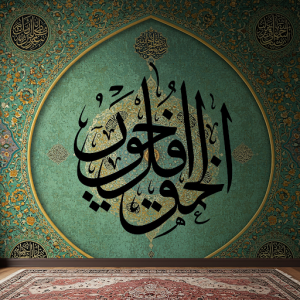
The inherent beauty of Islamic geometric patterns stems from a captivating interplay between visual complexity and harmonious balance. While intricate and detailed, these patterns avoid visual chaos through precise mathematical principles. The complexity draws the eye, inviting exploration of the interwoven shapes, while the underlying symmetry and balance create a sense of tranquility and order. This delicate equilibrium results in designs that are both intellectually stimulating and aesthetically pleasing, offering a visual experience that is both dynamic and serene.
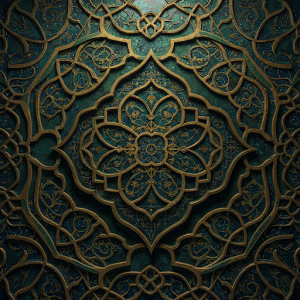 Geometric patterns used in Islamic wallpaper
Geometric patterns used in Islamic wallpaper

Islamic geometric patterns, when applied to wallpaper, possess a transformative power. Their intricate designs and inherent symmetry introduce an undeniable sense of elegance and sophistication to any space. The visual richness of these patterns elevates interior design, creating an atmosphere of refined beauty. The precision and balance inherent in the designs contribute to a sense of calm and order, enhancing the overall ambiance. Whether used in a minimalist or maximalist setting, these patterns add a touch of timeless artistry, transforming ordinary walls into captivating works of art.
In essence, Islamic geometric patterns are a testament to the beauty and complexity of Islamic art, offering a visually stunning and spiritually meaningful addition to any space.
Floral motifs Islamic wallpaper murals
Floral motifs in Islamic wallpaper murals create a beautiful and harmonious blend of nature-inspired design and Islamic artistic tradition.
Arabesque Influences
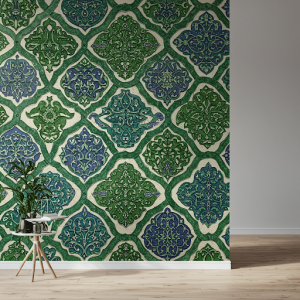
Arabesque patterns, a hallmark of Islamic art, are defined by their fluid, interlacing floral and vegetal designs. These motifs, often abstract and stylized, create a sense of continuous, rhythmic movement. The flowing lines and intricate details evoke a sense of organic growth and boundless expansion. This artistic style, avoiding representational imagery, emphasizes the beauty of abstract form and the interconnectedness of natural elements. Arabesque patterns are used in a variety of artistic mediums, including calligraphy, textiles, ceramics, and architecture, adding a touch of elegance and sophistication to Islamic art.
Symbolic Representations
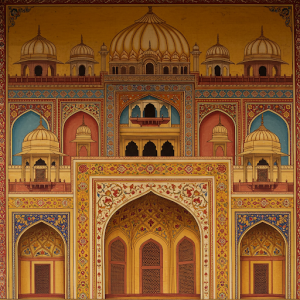
Floral motifs within Islamic art often carry symbolic weight, transcending mere aesthetic appeal. They frequently represent the lushness and beauty of paradise, evoking images of an eternal garden. The organic forms also symbolize growth and renewal, reflecting the cyclical nature of life and the flourishing of divine creation. Furthermore, these motifs convey a sense of abundance and prosperity, highlighting the richness and bounty of God’s blessings. The stylized depiction of flowers and plants, therefore, serves as a visual language, conveying spiritual and cultural values.
Variations and Styles
Islamic floral patterns display a rich tapestry of regional and historical variations. From the intricate, naturalistic depictions of Mughal India to the stylized, geometric forms of Ottoman Turkey, each era and location left its distinct mark. Persian influences, with their delicate and symmetrical designs, contrast with the bold, colorful patterns of Moorish Spain. These variations reflect the diverse cultural landscapes within the Islamic world, demonstrating how artistic traditions adapted and evolved. Each style, though unique, shares a common thread of reverence for nature’s beauty, expressed through stylized and abstract forms.
Mural Applications
Islamic floral motifs, when scaled into murals, possess a remarkable ability to transform spaces. The expansive canvas allows for intricate details and vibrant colors to fully manifest, creating breathtaking visual displays. These murals can evoke a sense of tranquility, grandeur, or spiritual connection, depending on the chosen motifs and color palettes.
The flowing lines and stylized forms create a dynamic visual experience, drawing the eye and enriching the surrounding environment. Whether adorning mosque walls or residential interiors, these murals infuse spaces with a sense of artistic elegance and cultural richness.
Color and Composition
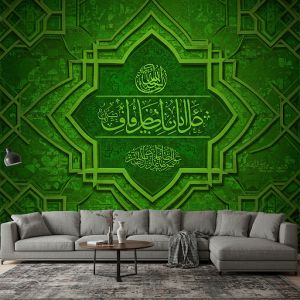
The visual impact of floral motifs in Islamic murals is significantly heightened by the strategic use of vibrant colors and harmonious compositions. Rich, saturated hues, such as deep blues, emerald greens, and radiant golds, bring the stylized floral patterns to life, creating a sense of opulence and visual depth. Harmonious compositions, achieved through balanced arrangements and repeating patterns, ensure that the vibrant colors work together seamlessly, avoiding visual chaos. This careful orchestration of color and composition creates a captivating visual experience, enhancing the overall beauty and spiritual resonance of the murals.
In essence, floral motifs in Islamic wallpaper murals offer a captivating blend of natural beauty and artistic tradition, creating visually stunning and spiritually evocative designs.
Mughal and Ottoman influences
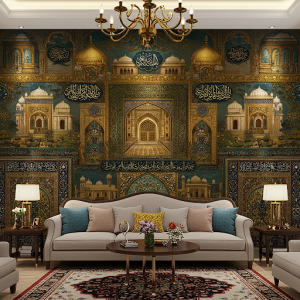
Islamic wallpaper can be used to create a sense of serenity and spirituality in a space, and it can also be a beautiful and unique way to add a touch of Islamic culture to your home decor.

